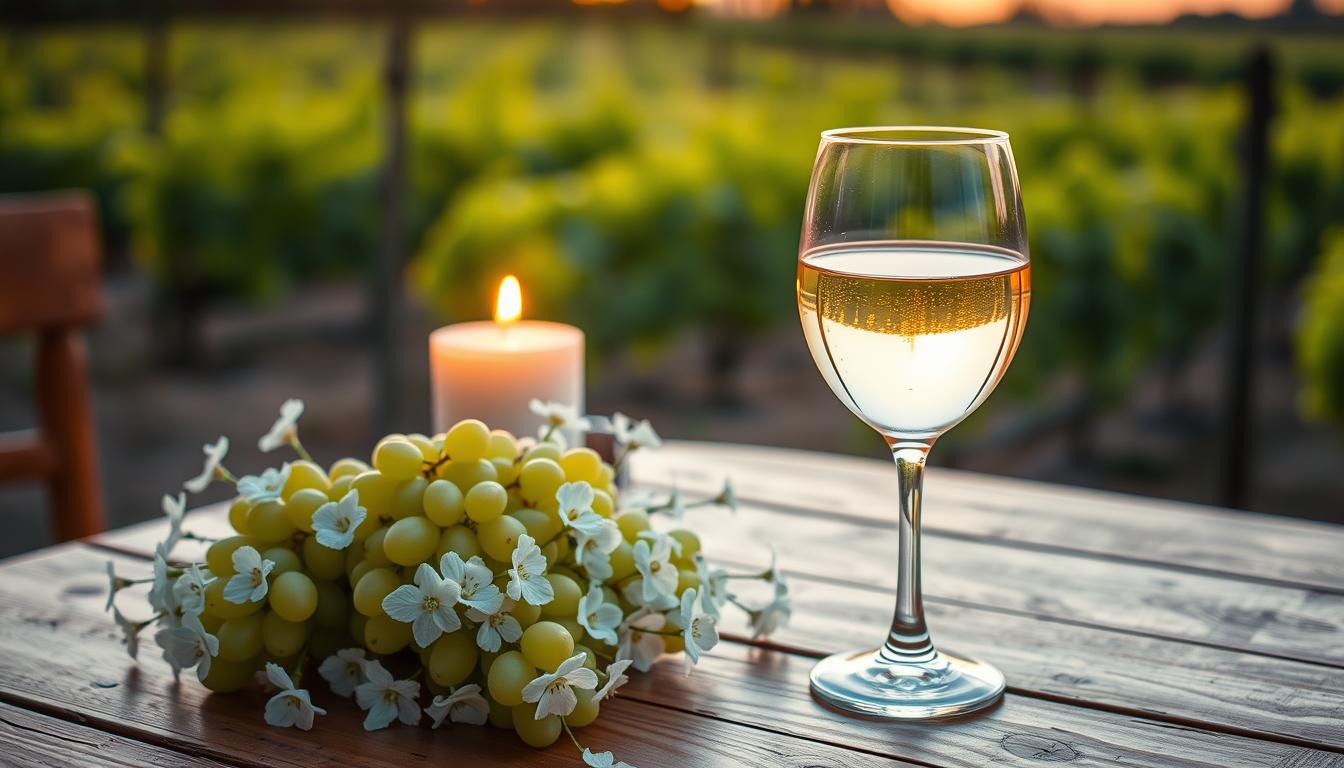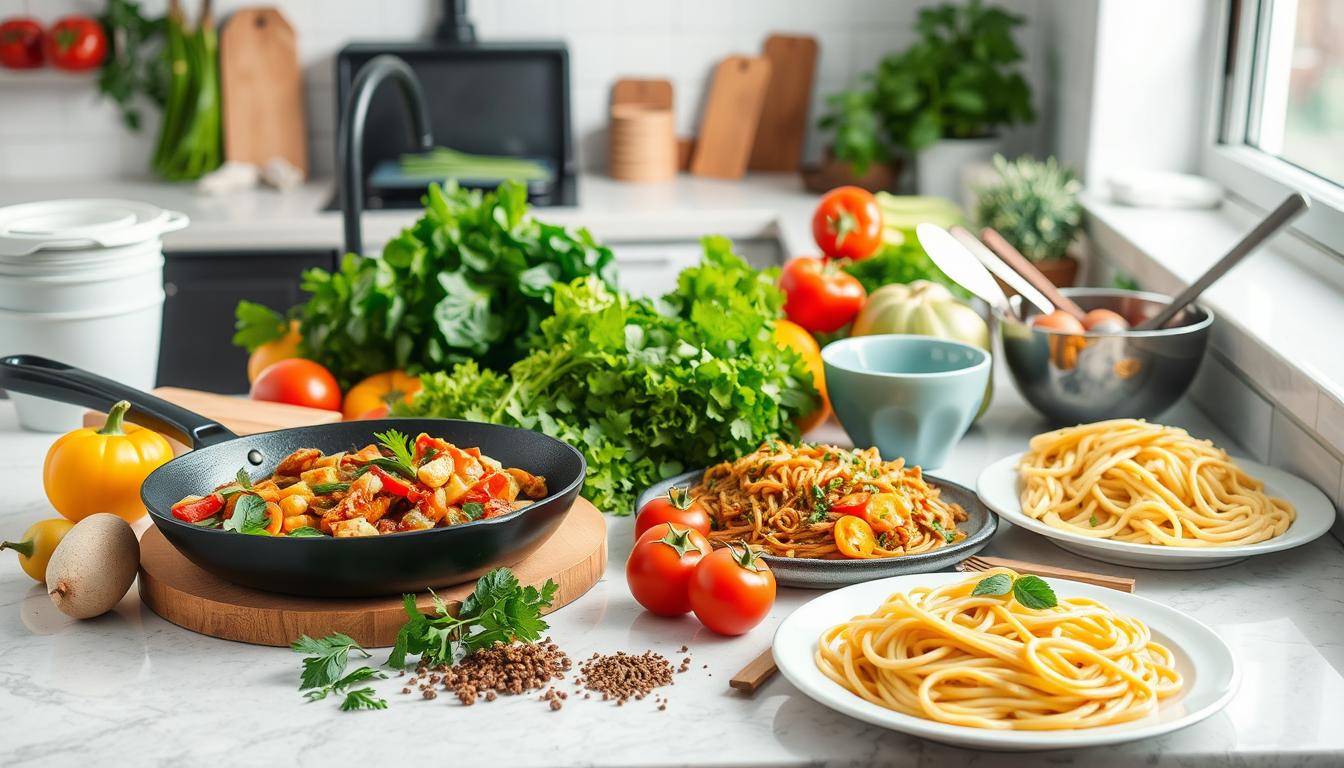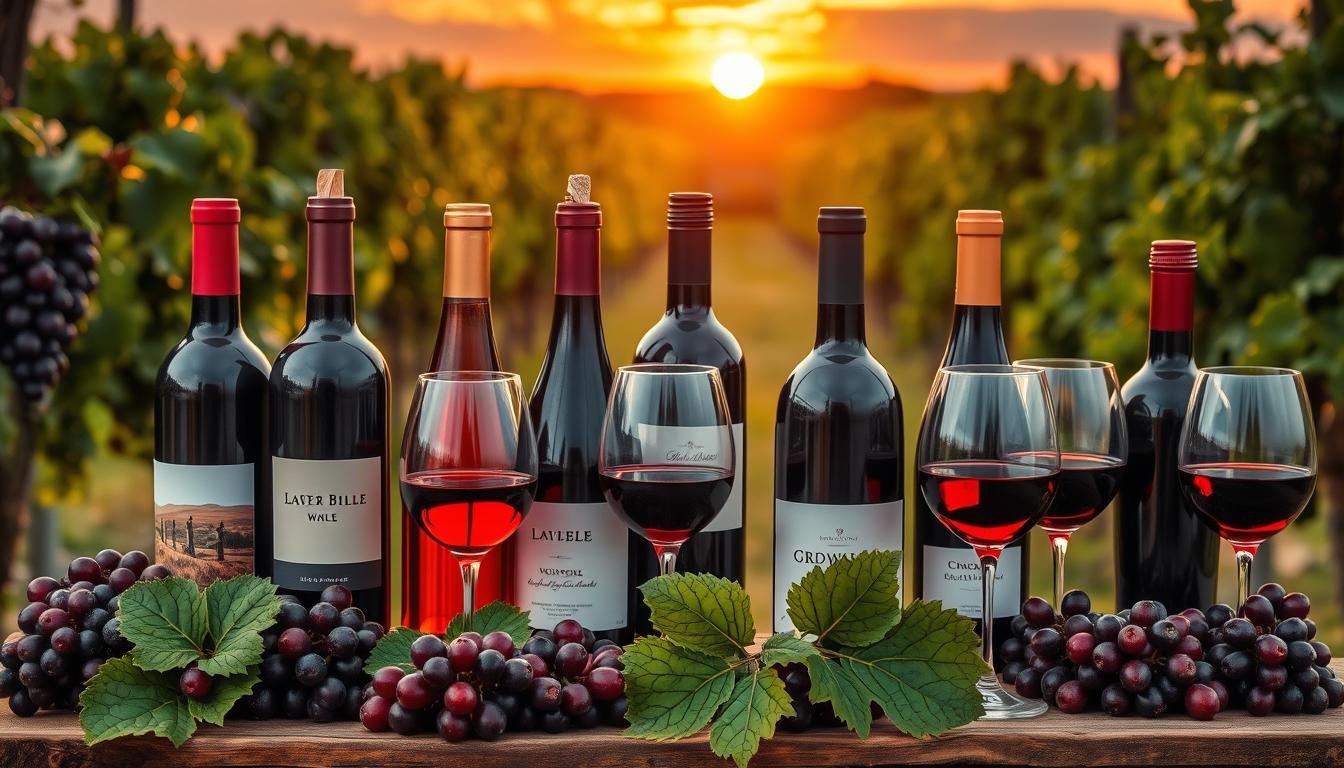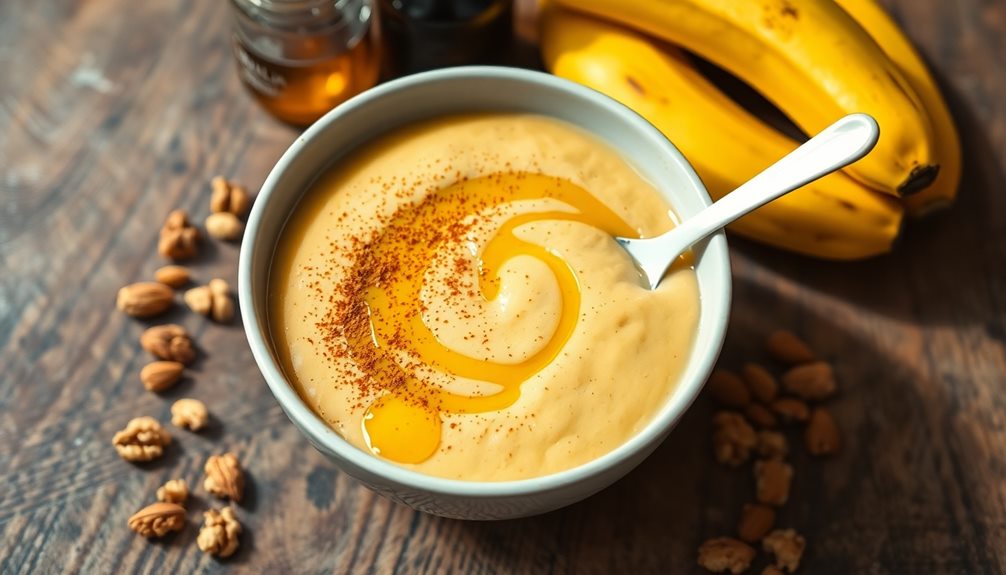Imagine sitting on a sun-drenched patio, the golden hour casting a warm glow over the glasses around you, each filled with sparkling, pale liquid. As you take a sip of *white wine*, you can taste the crispness of *Sauvignon Blanc* or the richness of *Chardonnay*, instantly transported to the vineyards where each grape was harvested with care. In that moment, you realize that white wine is not just a beverage; it’s a celebration of life’s little joys, from spontaneous gatherings with friends to intimate dinners that linger long into the night. Whether you consider yourself a connoisseur or just a casual drinker, the world of white wine invites you to explore the *best white wines* and discover a variety of flavors that can elevate any occasion.
With a vast selection of *wine varieties*, including *Pinot Grigio* and *Riesling*, there’s something for everyone. White wine, often characterized as bubbly and refreshing, effortlessly enhances meals with its versatility. From pairing with seafood to experimenting with lighter fare, the choices are virtually endless. As we embark on this journey through white wine, you’ll start to see how each glass can tell a story and how the right wine can transform mundane moments into cherished memories.
Key Takeaways
- White wine offers a refreshing variety for every occasion.
- Popular choices include Chardonnay, Sauvignon Blanc, Pinot Grigio, and Riesling.
- Pairing white wine with food enhances the overall experience.
- Wine tasting is a fun way to explore new flavors.
- Celebrating with white wine can make any gathering feel special.
Introduction to White Wine
White wine, primarily crafted from green grapes, offers a delightful array of flavors and aromas that vary significantly by region and grape varietal. This drink, enjoyed globally, boasts a rich history dating back thousands of years, with evidence of wine production existing for at least 7,500 years. The process of making white wine involves fermenting grape juice without the skins, a technique that contributes to its light color and crisp profile.
Various grape varieties play a crucial role in determining the taste and character of white wine. For instance, the Chardonnay is celebrated for its versatility, producing styles ranging from buttery to flinty. Sauvignon Blanc, known for its green and grassy notes, thrives in regions like Bordeaux and New Zealand, while Riesling offers a balanced fusion of fruit and acidity, appealing to a wide audience.
The fermentation methods applied during production can greatly influence the final product. For example, innovative techniques like interrupting fermentation create sweet wines, where grape sugars remain unconverted. Aging techniques also play a role, as barrels or stainless steel tanks can add distinct characteristics to white wine. Some sparkling varieties capture bubbles by retaining carbon dioxide until the bottle is opened, elevating their celebratory appeal.
As you explore the fascinating world of white wine, consider the rich tapestry of wine varieties and their unique flavors. Each sip invites you to discover the complexities and pleasures of this beloved beverage.

Exploring Different Varieties of White Wine
White wine enthusiasts enjoy a diverse range of options, including dry white wines, sweet white wines, and aromatic white wines. Each variety has its unique characteristics, flavors, and appeal, making it essential to understand the distinctions. Here’s a closer look at some of these delightful categories.
Dry White Wines
Known for their refreshing profiles, dry white wines typically have little to no residual sugar, resulting in a crisp taste. Varieties like Oyster Bay Sauvignon Blanc and Pierre Archambault Muscadet showcase vibrant flavors of citrus and peach. With less than 10 grams of residual sugar per liter, these wines often highlight the grape’s natural acidity and terroir. Perfect for those seeking a light and invigorating experience, dry white wines are ideal companions for seafood and salads.
Sweet White Wines
For those who appreciate a hint of indulgence, sweet white wines offer vibrant floral and fruity notes. These wines feature more than 30 grams of residual sugar, making them accessible to new wine drinkers. Popular choices like Lions De Suduiraut Sauternes and Ricossa Moscato D’asti deliver a delightful sweetness that can satisfy a craving for dessert. The lower acidity found in sweet white wines enhances their appeal, allowing them to pair wonderfully with a variety of dishes, including spicy cuisine.
Aromatic White Wines
Aromatic white wines stand out due to their pronounced floral and fruity aromas, which arise from higher levels of terpenes. Varietals such as Riesling and Gewürztraminer provide a sensory experience that captures the essence of the vineyard. This category showcases a range of sweetness levels, allowing you to discover wines like Dr. Pauly Dry Riesling or Yalumba Eden Valley Viognier that vary in intensity and flavor. Embrace these aromatic selections for a unique tasting adventure that awakens your palate.
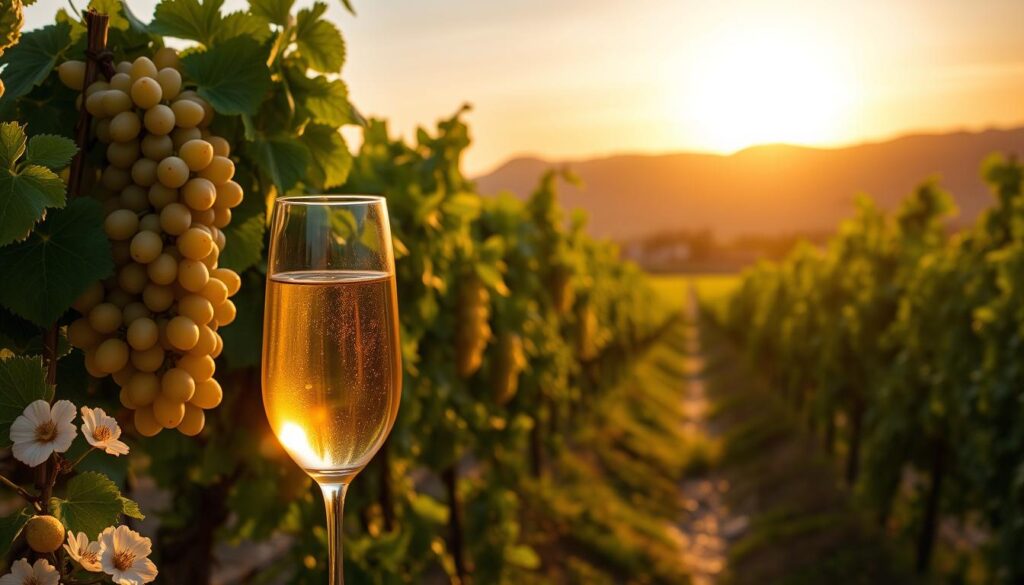
Popular White Wine Types You Should Try
Exploring white wine opens up an exciting world of flavors and aromas. Each type offers its unique charm and versatility. You’ll discover favorites like chardonnay, sauvignon blanc, pinot grigio, and riesling, each providing distinctive tasting experiences suited for various occasions.
Chardonnay: The Classic Favorite
Chardonnay stands as a quintessential white wine loved by many. Its adaptability allows winemakers to create an array of profiles, ranging from crisp and lively to buttery and velvety. Whether you opt for an oaked version from California or a fresh unoaked style from Burgundy, this wine accommodates various culinary delights and is ideal for your gatherings.
Sauvignon Blanc: A Crisp Choice
With vibrant acidity and refreshing qualities, sauvignon blanc is a delightful choice, especially in warmer months. This wine showcases crisp notes of green apple and tropical fruits, particularly in offerings from regions like Napa Valley and New Zealand. Enjoy it chilled on a sunny patio or paired with light seafood dishes for an invigorating experience.
Pinot Grigio: Refreshingly Light
Originating from Italy, pinot grigio brings a light body and crisp acidity to the table. Its flavor profile features notes of ripe apple and pear, making it a perfect companion for casual lounging or social gatherings. A great option for those seeking a refreshing sip, this wine consistently wins hearts with its easy-drinking nature.
Riesling: The Sweet Sensation
Riesling holds a special place in the hearts of wine lovers, particularly for its range of sweetness levels. Commonly presenting notes of apricot, honey, and floral hints, this versatile wine suits various culinary pairings. From dry to sweet styles, riesling can elevate both spicy dishes and fruity desserts, making it a delightful choice for diverse occasions.

| White Wine Type | Tasting Notes | Best Pairing |
|---|---|---|
| Chardonnay | Crisp to creamy, varies widely | Rich seafood, creamy pasta |
| Sauvignon Blanc | Zesty, green apple, tropical fruit | Light salads, grilled chicken |
| Pinot Grigio | Light, crisp apple and pear | Shellfish, light cheeses |
| Riesling | Sweet, apricot, honey | Spicy Asian dishes, fruit desserts |
Wine Tasting: A Journey for Your Palate
Embarking on a wine tasting adventure can unveil a world of flavors and aromas. Engaging with different wines allows you to explore the depths of flavor profiles and appreciate the nuances that each bottle offers. Hosting your own wine tasting nights can become a fun and educational experience. Visiting a vineyard and experiencing a wine tasting in person can provide an even deeper understanding and appreciation for the complexity of wine. The vineyard living experience allows you to see the grapes growing on the vines, understand the winemaking process, and taste the final product in its natural environment. This hands-on approach can provide a truly immersive and unforgettable wine tasting experience.
How to Host a Wine Tasting
To create an unforgettable wine tasting event, gather a selection of white wines, ideally from diverse regions or grape varieties. Consider the following steps:
- Choose 4-6 different white wines to sample.
- Prepare tasting glasses, ensuring cleanliness and uniformity.
- Accompany your selections with cheeses, fruits, or light hors d’oeuvres that pair well.
- Encourage participants to take notes on their experiences, focusing on color, aroma, and taste.
Identifying Flavor Profiles
Understanding flavor profiles opens up a new dimension in wine tasting. Familiarity with various aromas enhances your ability to articulate your tasting experiences. Here’s how:
- Aromas can range from fruity and floral to buttery or mineral, revealing a wine’s pedigree.
- Individual flavor profiles enhance when paired with food, bringing out different notes. For example, white wines complement lighter fare such as seafood.
- Observe the color and clarity. A wine’s appearance can indicate its age, grape variety, and residual sugar content.

| Wine Type | Common Flavor Profiles | Ideal Food Pairings |
|---|---|---|
| Chardonnay | Apple, Butter, Vanilla | Grilled Salmon, Chicken |
| Sauvignon Blanc | Citrus, Grass, Herbal | Salads, Goat Cheese |
| Riesling | Peach, Honey, Floral | Spicy Dishes, Duck |
| Pinot Grigio | Pear, Almond, Minerality | Shellfish, Light Pasta |
Sampling wines and interpreting their flavor profiles not only enhances your wine tasting skills but also makes for engaging conversations with fellow wine enthusiasts. With practice, you’ll become adept at identifying and discussing the intricate characteristics of your favorite wines.
Understanding Wine Pairing with White Wine
Wine pairing is an art that can elevate your dining experience. With white wine’s diverse range, knowing how to pair it with various dishes is essential. Here, you’ll discover the best matches for seafood, spicy food, and cheese that will enhance flavors and bring harmony to your meals.
Pairing with Seafood Dishes
When it comes to seafood, white wine reigns supreme. Varietals like Chardonnay and Sauvignon Blanc are known for their vibrant acidity, making them an excellent choice to complement grilled fish and shellfish. The crispness of a Pinot Grigio works wonders with light seafood dishes, salads, and roast chicken with lemon, highlighting the dish’s freshness and enhancing the overall palette.
Perfect Matches for Spicy Food
Spicy food can present challenges for wine pairing, but white wines shine brightly in this area. A Sauvignon Blanc, with its young, crisp characteristics, pairs seamlessly with Indian curries, counterbalancing the heat. On the other hand, wines like Riesling, known for their sweetness, can soften the bite of dishes such as sweet and sour Chinese takeout. This understanding of how wine can tame spice is vital for creating harmonious experiences.
Combining White Wine with Cheeses
The world of cheese pairing with white wine is equally intriguing. For a charcuterie board, consider using a dry, crisp white like Chardonnay, which complements creamy cheeses, such as Brie, beautifully. Sharp cheeses find their match in Sauvignon Blanc, showcasing flavors that enhance each bite. Choosing the right wine not only accentuates the cheese’s qualities but also enriches your overall tasting experience.
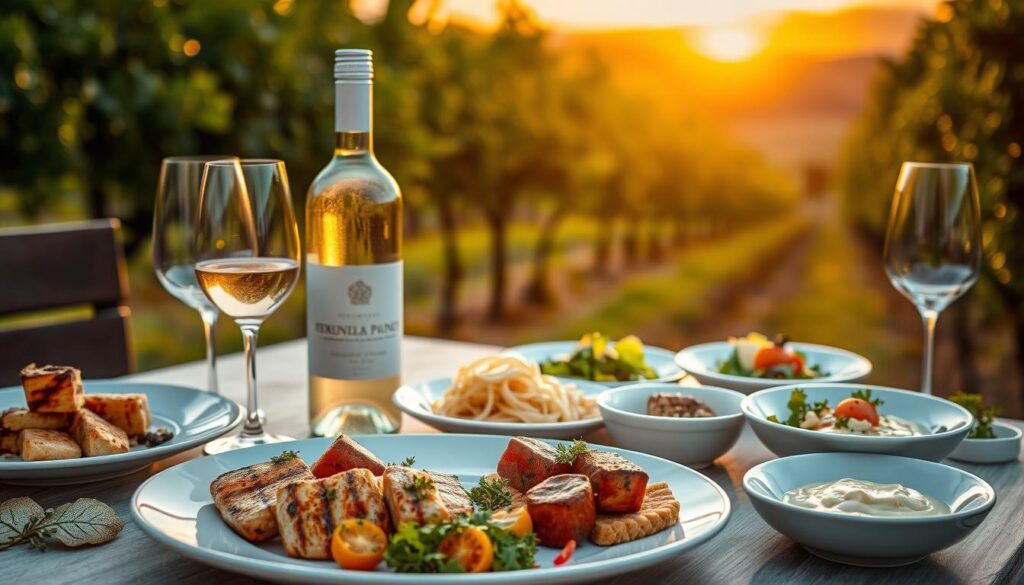
Exploring the Best White Wine Brands
When searching for the best white wines, you’ll encounter some remarkable brands that consistently deliver exceptional quality and flavor. Many wine enthusiasts gravitate towards these renowned white wine brands for their unique offerings and commitment to excellence.
Brands like Ste. Michelle Wine Estates and Stag’s Leap Wine Cellars stand out for producing outstanding varietals. Ste. Michelle, known for its elegant Rieslings, showcases the beauty of Washington State’s vineyards, while Stag’s Leap Wine Cellars offers exquisite Sauvignon Blanc from Napa Valley.
You may also want to explore selections from European regions. For instance, Chardonnay from Burgundy, France, and Riesling from Mosel, Germany, have gained international acclaim. These areas are celebrated for crafting some of the best white wines in the world.
To help you navigate your choices, here’s a table summarizing some exemplary white wine brands and their notable varietals:
| Brand | Region | Varietals | Average Price |
|---|---|---|---|
| Ste. Michelle Wine Estates | Washington, USA | Riesling, Chardonnay | $29.49 |
| Stag’s Leap Wine Cellars | Napa Valley, USA | Sauvignon Blanc | $34.99 |
| Château de Plaisance | Bordeaux, France | Chardonnay | $30.49 |
| Künstler | Rheingau, Germany | Riesling | $24.99 |
| Antinori | Tuscany, Italy | Pinot Grigio | $26.99 |
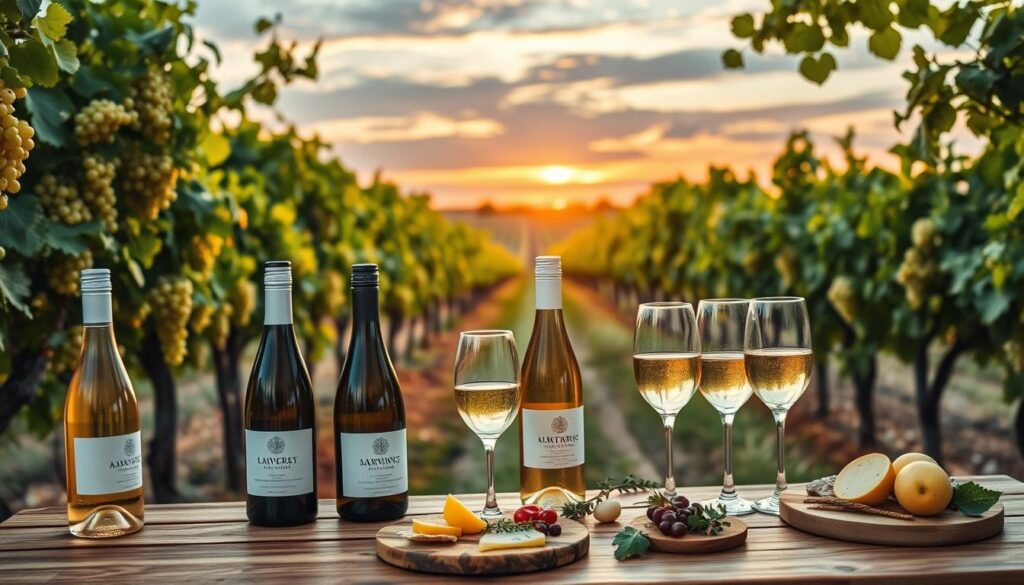
As you explore these white wine brands, consider the diverse flavor profiles and pairings they offer. With thoughtful choices, you can enhance your culinary experiences, making each sip a discovery of flavor and enjoyment.
The Role of Terroir in White Wine Production
Understanding the role of terroir is essential in appreciating the artistry of white wine production. Terroir reflects the unique environmental conditions where grapes grow, influencing flavor profiles significantly. Various factors, including soil types, elevation, and proximity to bodies of water, combine to create distinct wine characteristics.
How Geography Affects Flavor
Geography primarily determines how grapevines express their potential. The interplay between terroir and grape variety shapes the aromatic profiles of wines. For example, Sauvignon Blanc from cooler regions often showcases vibrant green notes while warmer climates produce riper, fruitier flavors. The diversity in terroir leads to contrasts, even within the same grape varietal, enhancing the complexity of white wines.
Climate Considerations
Climate considerations play a pivotal role in crafting the characteristics of white wines. Temperature, sunlight radiation, and rainfall patterns directly impact grape ripening and development. Cooler climates tend to yield white wines with high acidity, offering a crisp, refreshing taste. In contrast, warmer climates result in softer, fruitier profiles, allowing for an array of sensory experiences. The nuanced understanding of climate variations informs you about selecting the perfect wine for any occasion.

Wine Events and Celebrations Around White Wine
Wine events provide a fantastic avenue for you to immerse yourself in the vibrant world of white wine. One significant highlight is International Sauvignon Blanc Day, celebrated on May 6. This delightful occasion encourages wine enthusiasts to explore and appreciate the crisp, refreshing qualities of Sauvignon Blanc. You can join in the festivities by organizing a tasting at home, pairing this elegant wine with local dishes, or simply savoring a glass with friends. It’s an ideal day to appreciate the unique terroirs and flavor profiles that this varietal has to offer.
In addition to special days like International Sauvignon Blanc Day, wine festivals provide an exceptional opportunity to sample a diverse range of wines. Events such as the Napa Valley Wine Auction not only showcase top-tier wines but also combine them with local cuisine, creating an unforgettable experience for attendees. These festivals often celebrate local vineyards and winemakers, allowing you to discover new favorites while enjoying the rich culture surrounding wine.
Whether you’re attending International Sauvignon Blanc Day or participating in lively wine festivals, you will find countless ways to celebrate white wine. Embrace these occasions by learning about different varietals, exploring thoughtful pairings, and creating lasting memories with fellow wine lovers.
